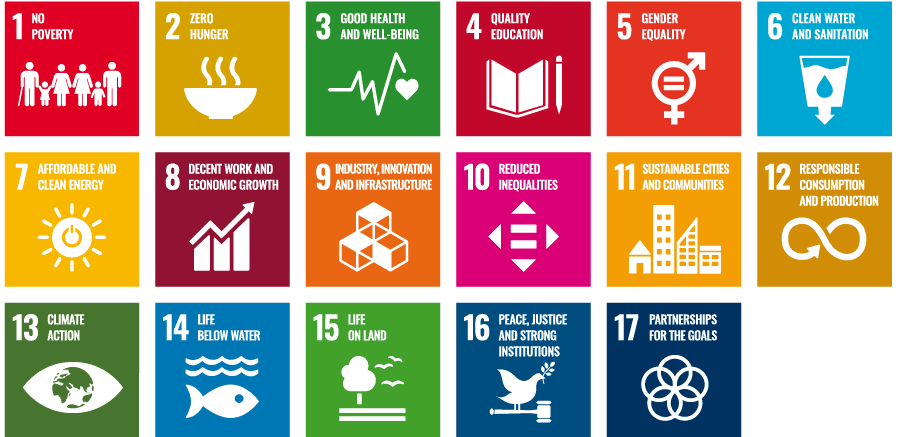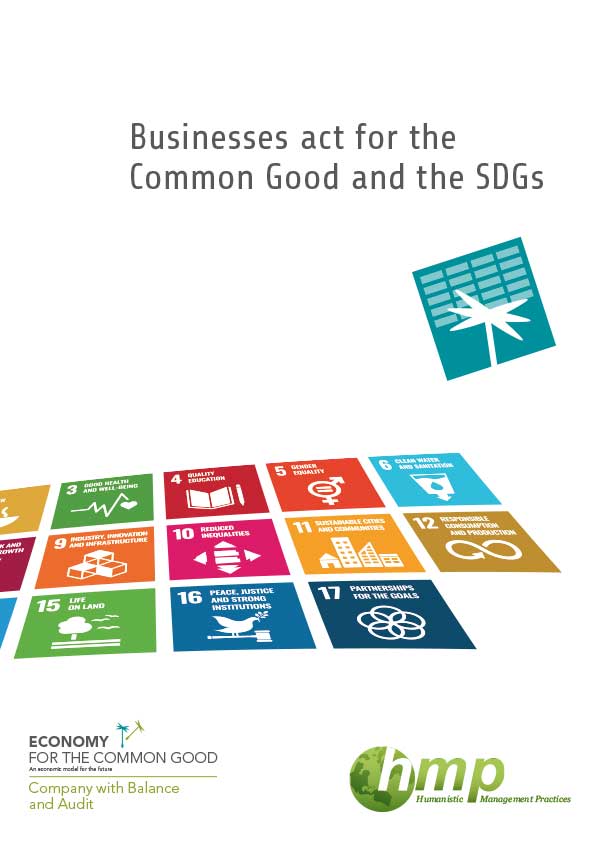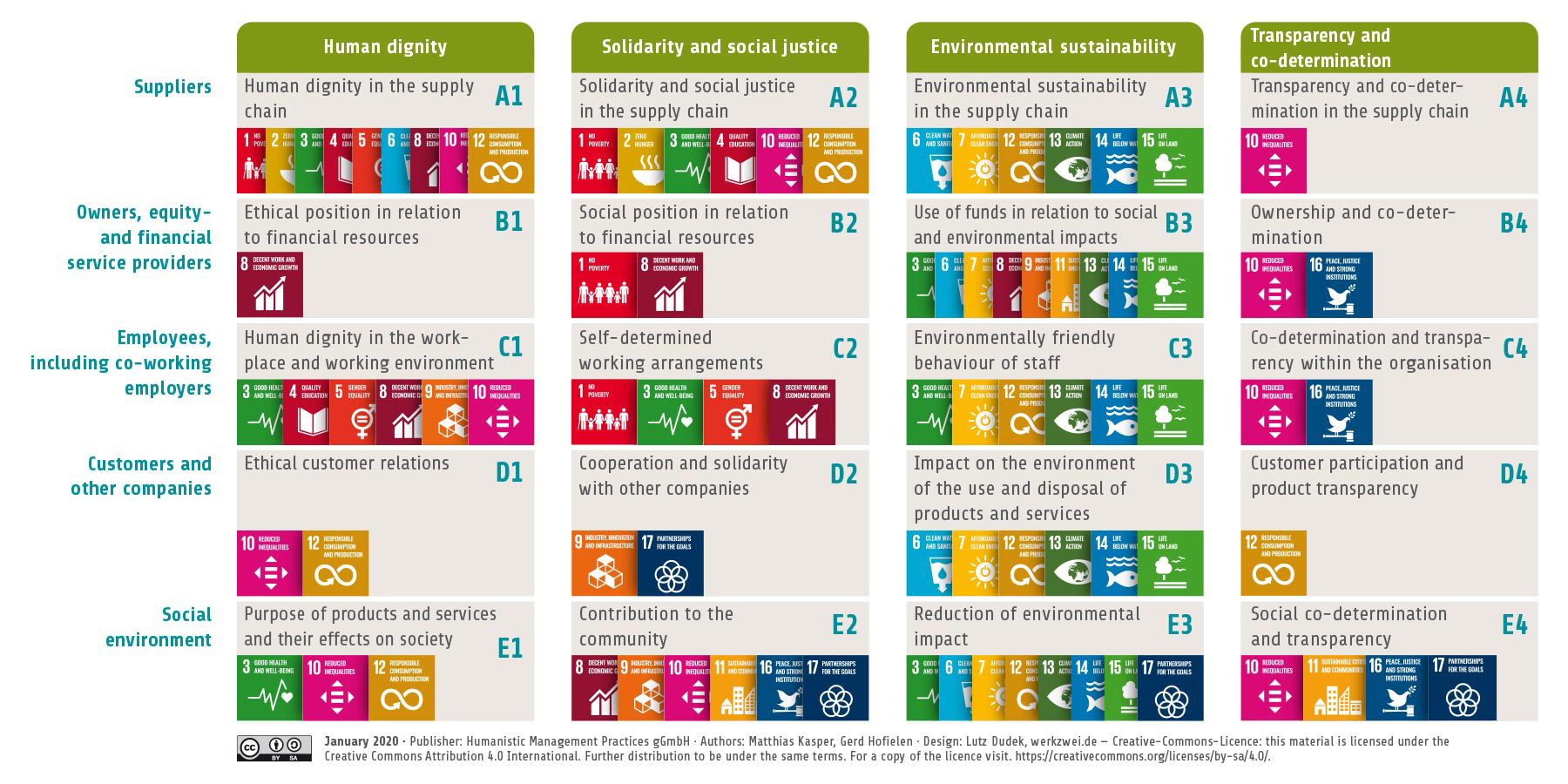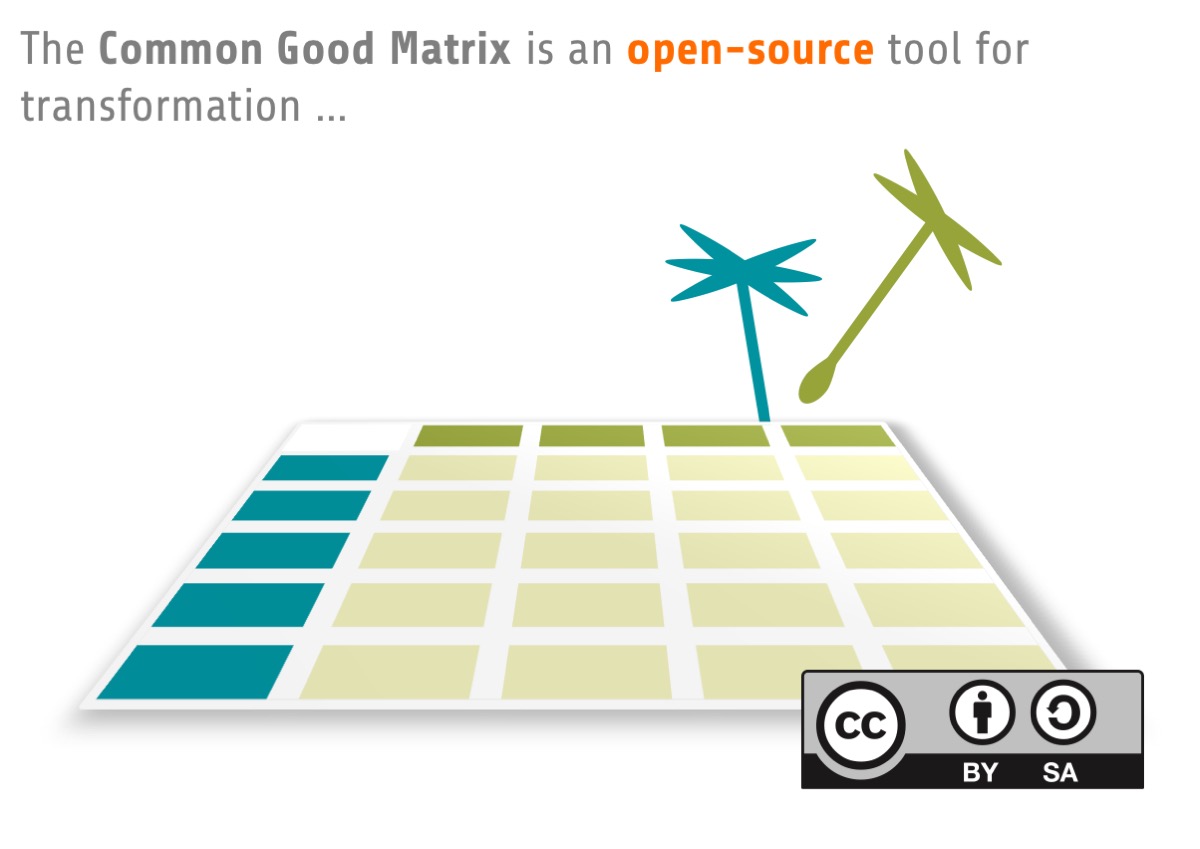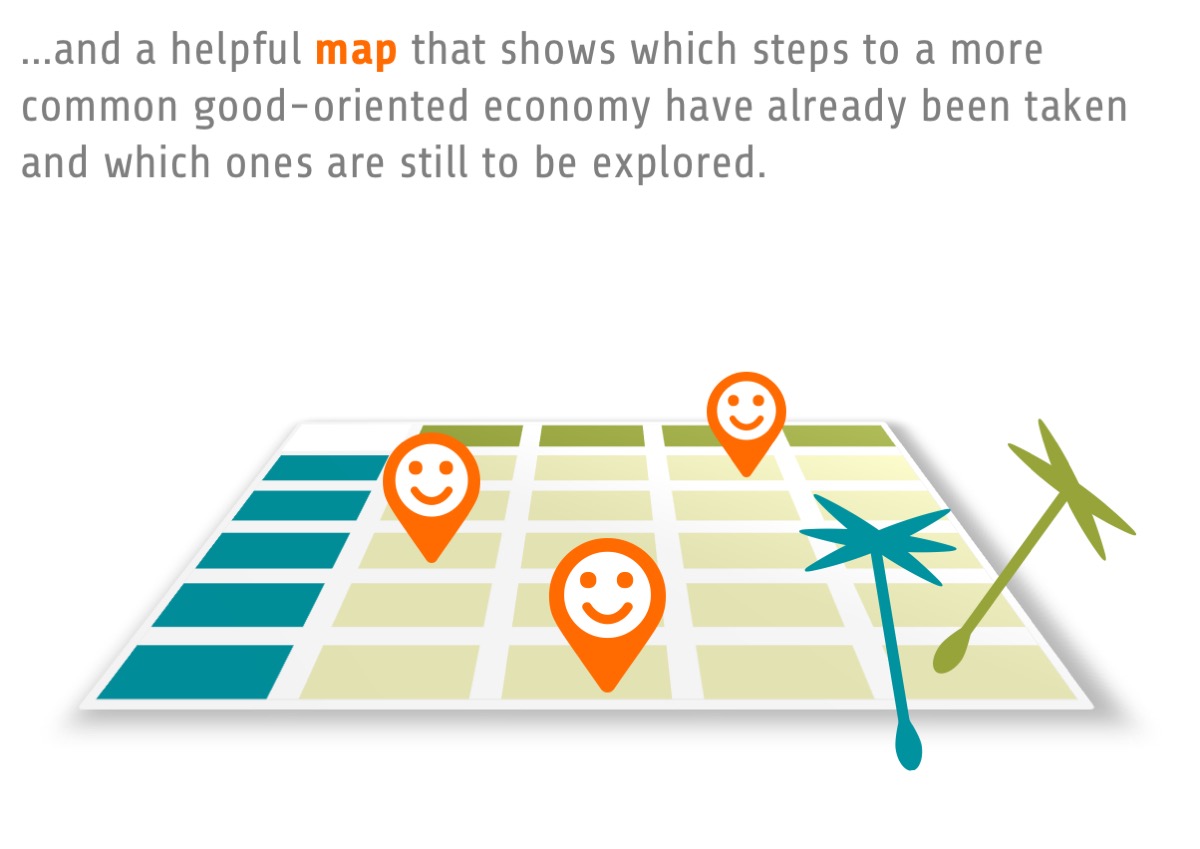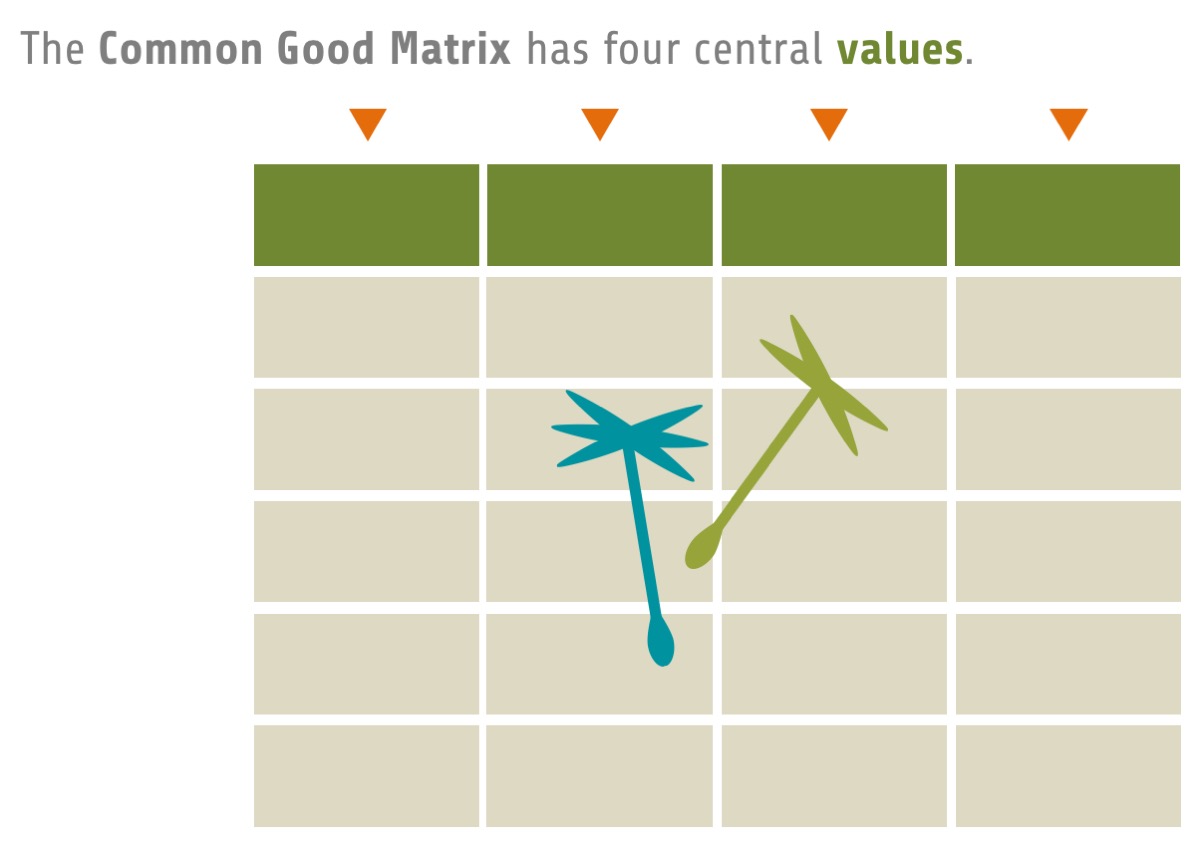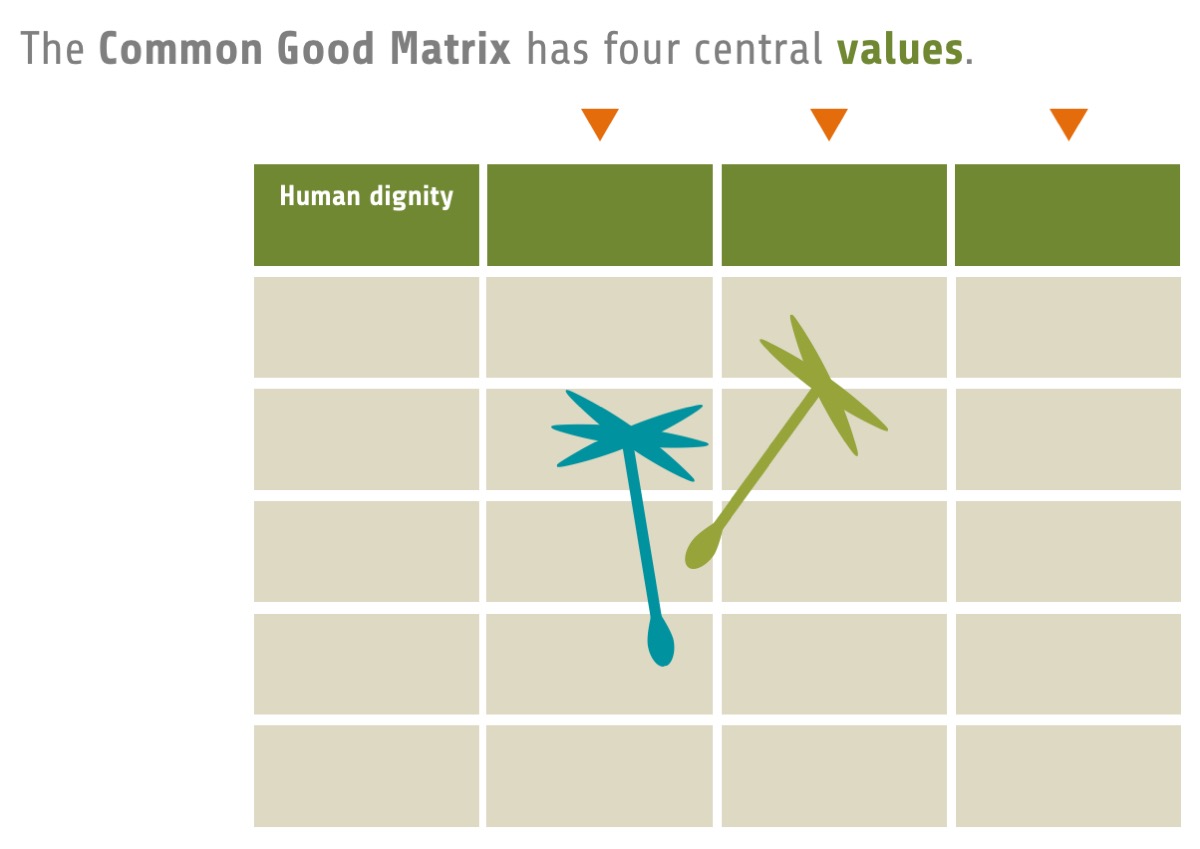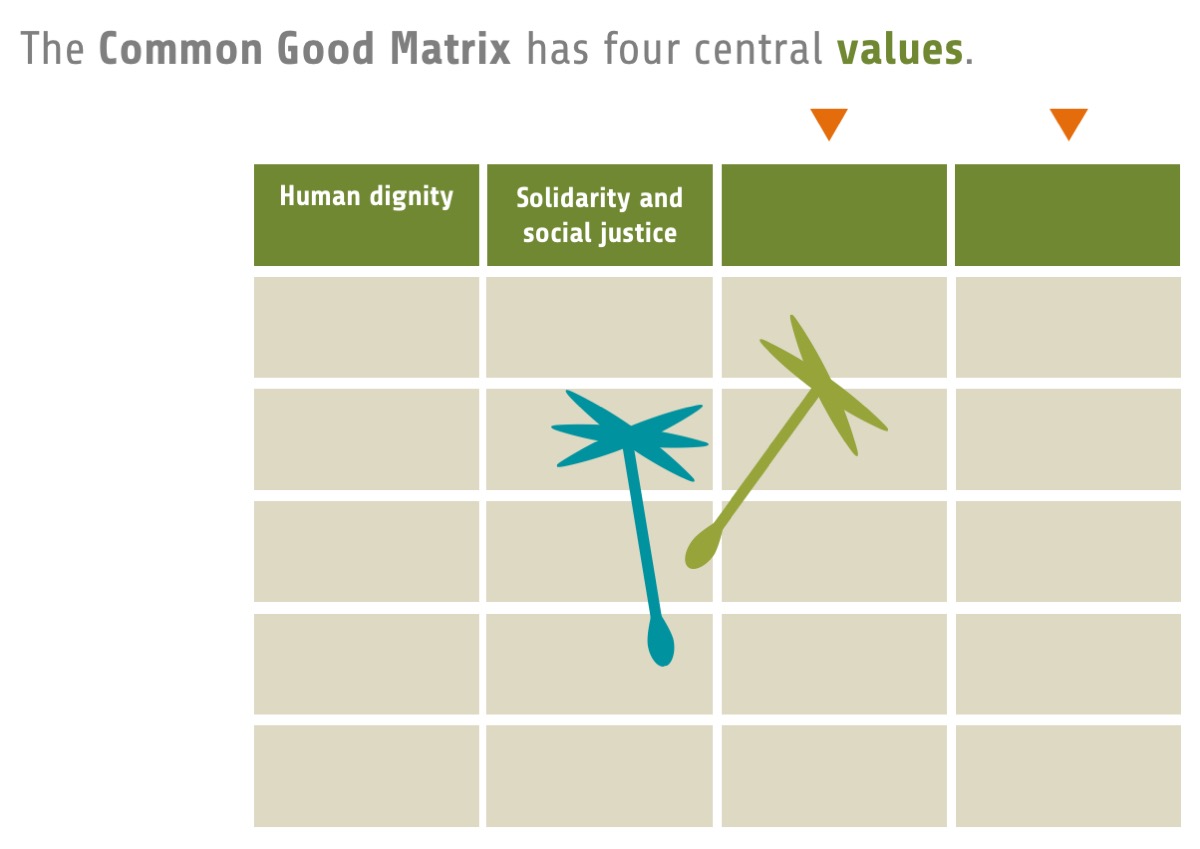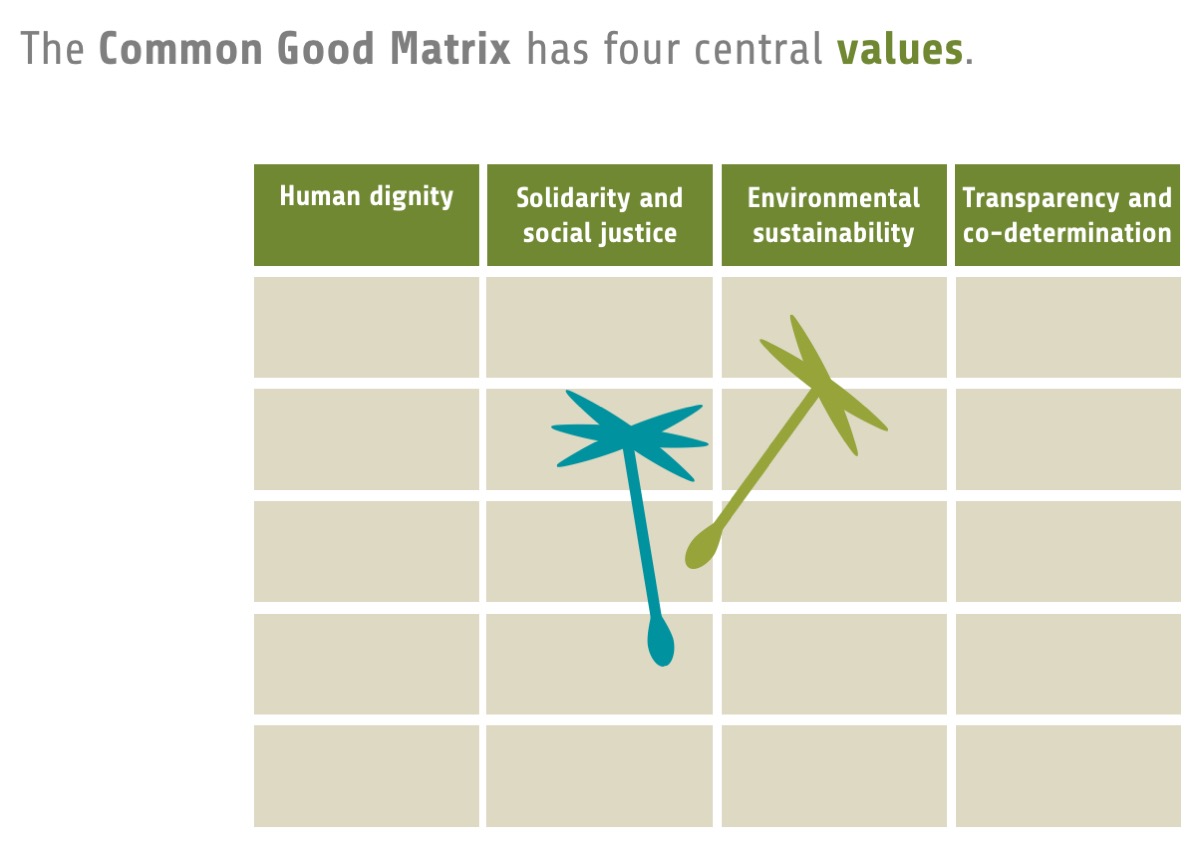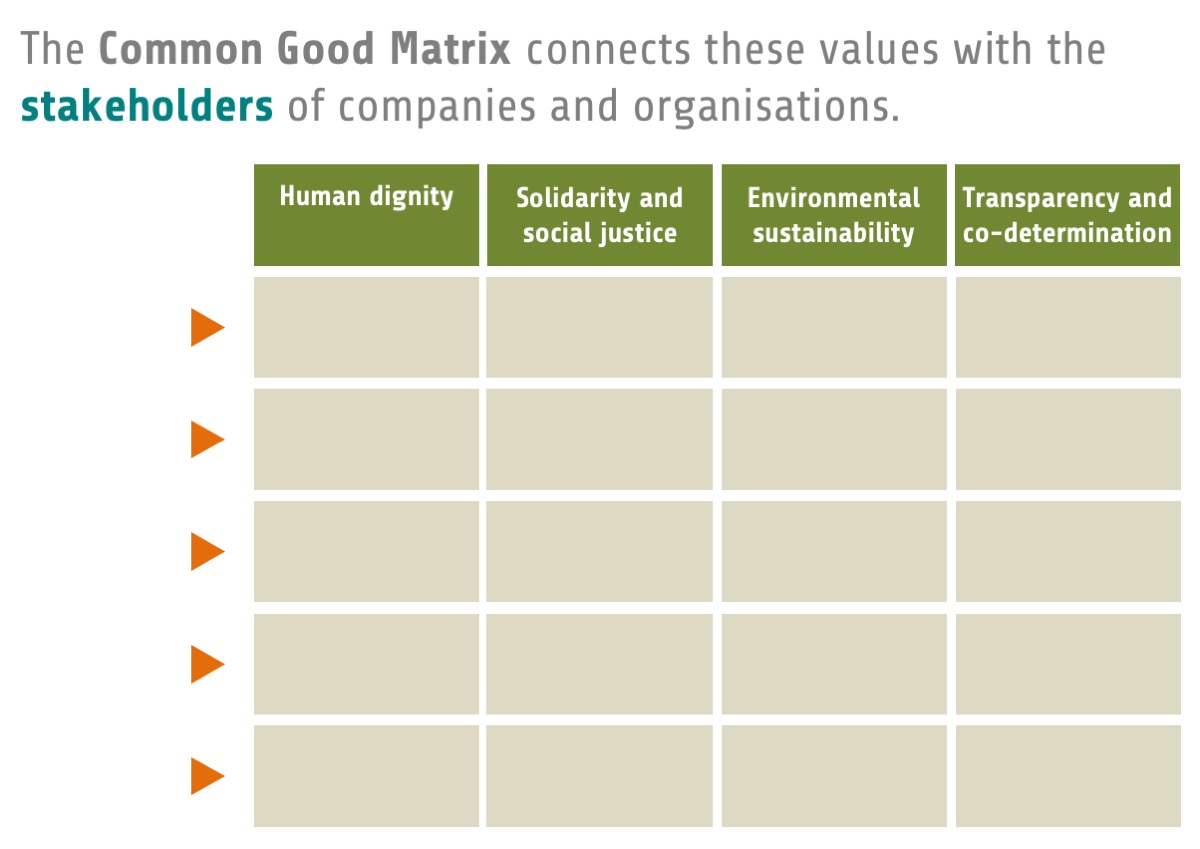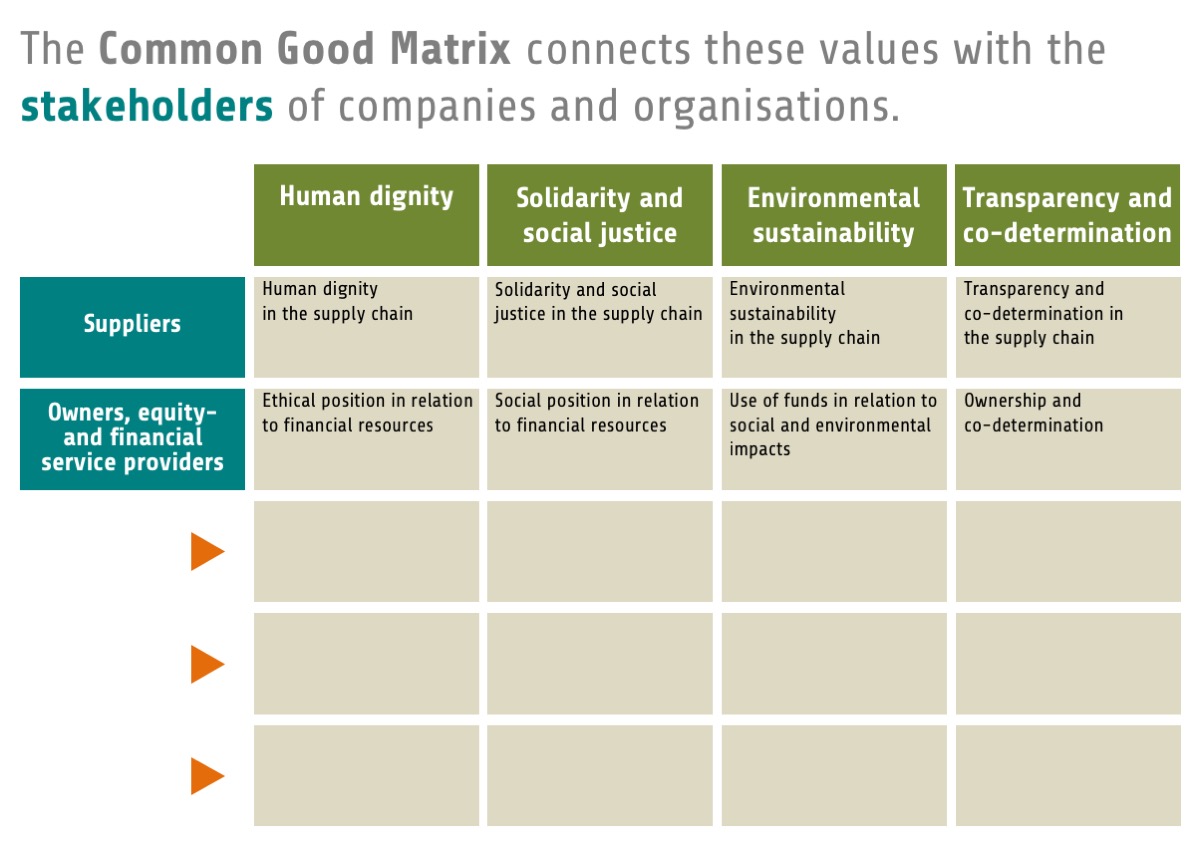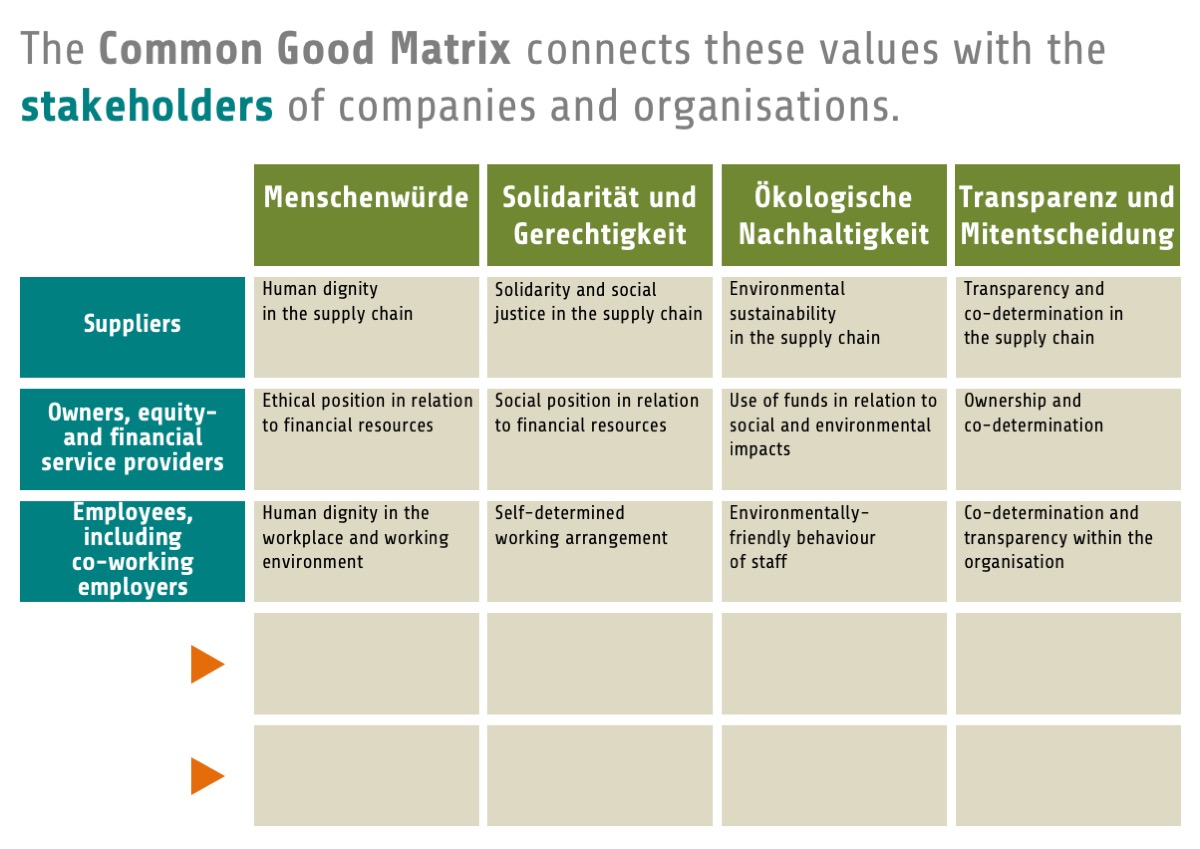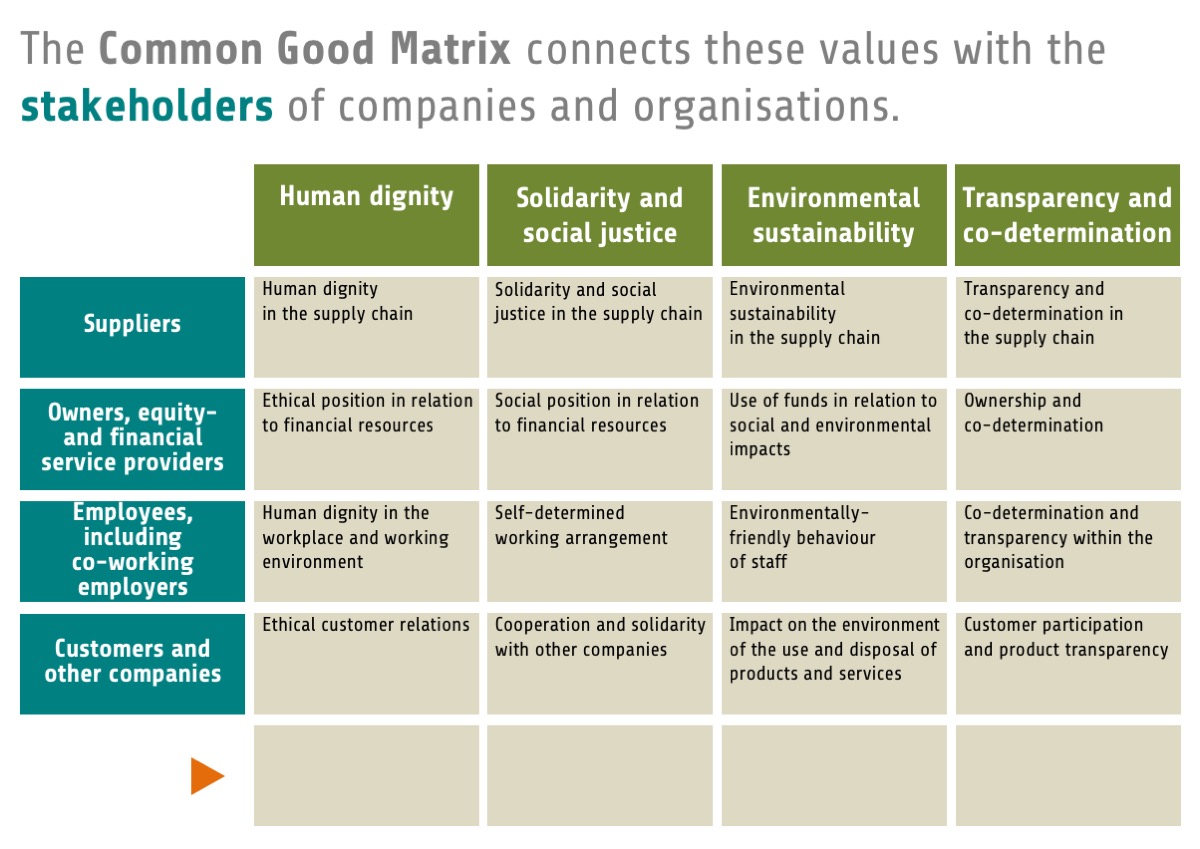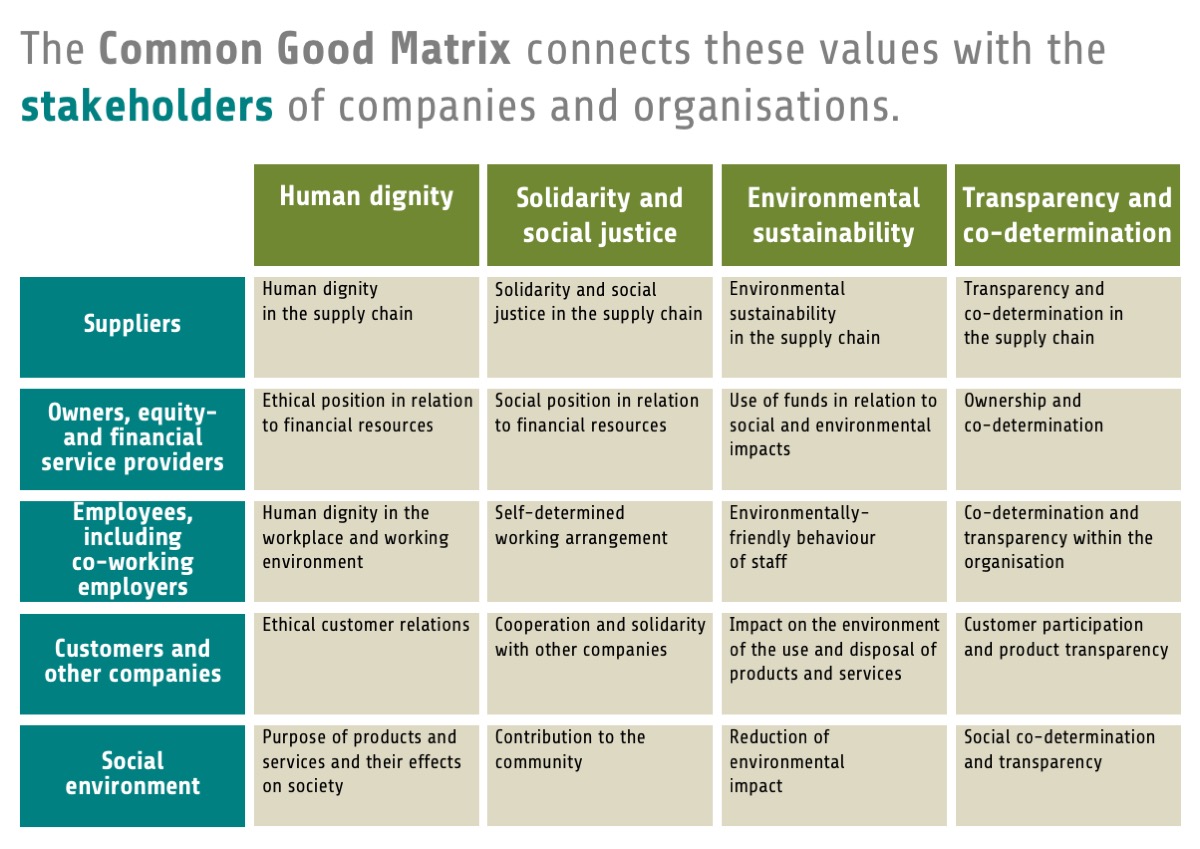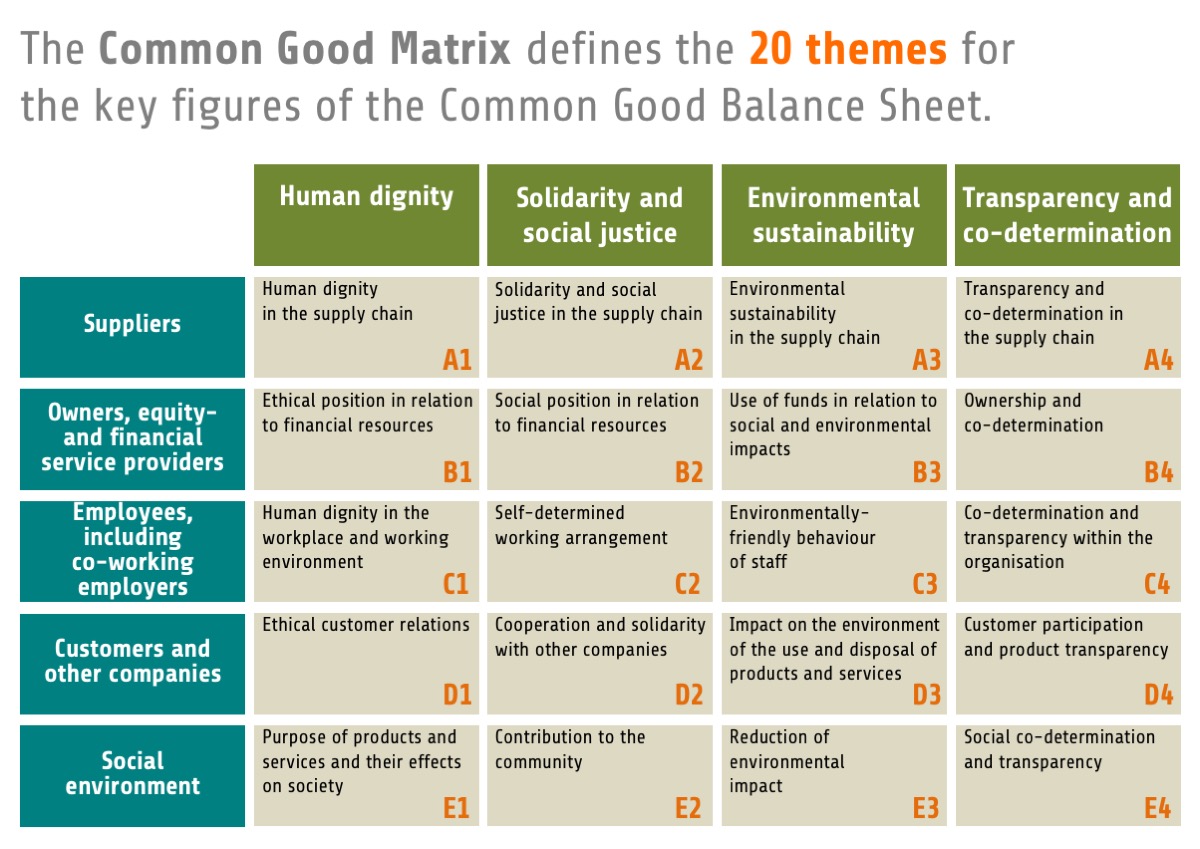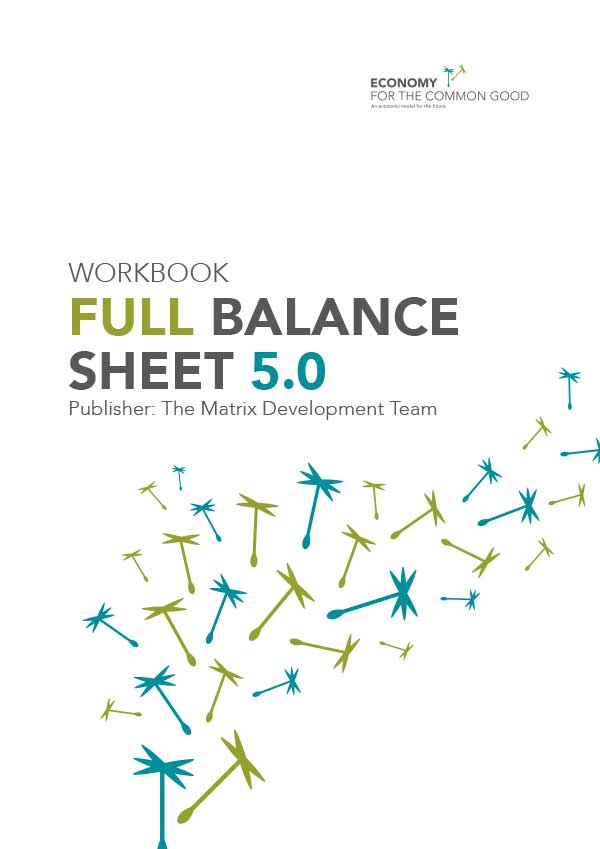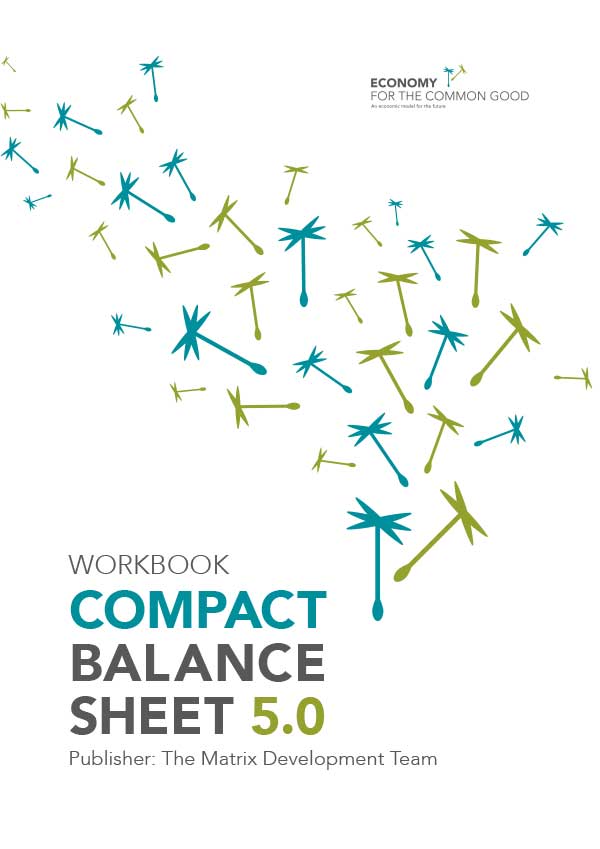Businesses act for the Common Good and the SDGs
Guidelines by Matthias Kasper and Gerd Hofielen
These guidelines are aimed at companies and organisations that are concerned with the UN’s Sustainable Development Goals (SDG) and wish to contribute to their implementation. The model of the Economy for the Common Good (ECG) and its control instrument the Common Good Balance Sheet serve as essential strategic and business management tools to help business reach these goals. According to a study conducted at the University of Bremen, Germany, the ECG model is an ambitious approach to assist in implementing the SDGs.
These guidelines are action-oriented. They help companies find ways to implement the SDGs and to examine to what extent they can use the Common Good Balance Sheet as a corporate and organisational compass.
The guidelines provide a general insight into the United Nations‘ Agenda 2030 and show what role companies can play in fulfilling the SDGs. Furthermore, they examine what contribution the Economy for the Common Good can make to the Sustainable Development Goals and to what extent companies can use the Common Good Balance Sheet to increase their SDG performance.
The main section of the guidelines looks closely at all 17 Strategic Development Goals and explains which common good-oriented business practices can be used to promote a specific SDG. It first shows which global challenges the SDG in question should address from the point of view of the United Nations and in which areas of action companies can contribute to the implementation of the SDGs
Promoting constitutional values
The Common Good Matrix combines the values that promote successful relationships and a good life with the most important stakeholders of companies and organisations. These values are also enshrined in most constitutions worldwide.
Balance sheet and development
The Common Good Matrix defines 20 themes for the key figures of the Common Good Balance Sheet. It allows not only a compact overview of the results of a Common Good Balance Sheet, but also the changes and improvements since the last balance sheet.
Open source into the future
The Common Good Matrix is an open-source tool for the transformation of companies and organisations and, as a guide to sustainability, a helpful map that shows which paths have already been taken to improve common good-oriented business practices and which paths still need to be taken.
Pioneers and beacons for a future suitable for grandchildren
Many companies are already working sustainably and are committed to helping society. With the Common Good Balance Sheet, they can document this development in a comparable way, communicate it credibly and present themselves as a beacon for the common good and sustainability.
The 20 themes of the Common Good Matrix
A click on the matrix themes displays further information on the respective theme.
All goods and services purchased by a company have an associated impact on society, which can be either positive or negative. Of these, one of the most important is the working conditions of all employees in the supply chain. A company is responsible for the well-being of all people – including its suppliers and subcontractors. An ECG company... Companies have the responsibility to demand a fair and just treatment of all stakeholders in the supply chain, and to actively promote this. An ECG company recognises its co-responsibility for solidarity and social justice throughout the supply chain, and develops its business practices accordingly. Every company is faced with environmental impacts in the supply chain, and contributes to these when purchasing raw materials, goods and services. Companies are therefore responsible for environmental sustainability in their supply chain and should aim to reduce any negative environmental impact wherever possible. An ECG company ... Companies have the responsibility to demand transparency and participation for all stakeholders in the supply chain, and to actively support and promote this. Every company can learn about the social risks and potential irregularities in the supply chain, communicate its requirements and make appropriate purchasing decisions. An ECG company recognises its co-responsibility for transparency and co-decision making throughout With a Common Good-orientated approach, money is not the main objective, but serves only as a means of payment. When dealing with money, respect for human dignity is more important than financial interest. If a company is able to finance its operations primarily from its retained earnings and from equity capital provided by its owners and third parties who share its commitment to ECG values, it will minimise the risk of being thrown off course by having to meet the expectations of the Any borrowing is a commitment to add value, and thus to be able to pay interest and make repayments. Loans should come from social and solidarity-based sources or ethical banks. An ECG company … Achieving fairness towards all stakeholders is a major objective. The company’s spending becomes the “income” of the suppliers, employees and society. Surplus funds are first allocated to the continuity and further development of the company and the creation of necessary contingency reserves. The distribution of profits as dividends to equity holders should only follow after sufficient provisions for the future have been made. An ECG company … The move towards an environmentally sustainable society requires a review of environmental issues in all investments, in particular the targeted allocation of revenue to environmentally highly effective investments. Investments can also be made directly in socio-environmental projects or financial services. Their impact often applies in both areas, social as well as environmental, and can be considered together. An ECG company … A company lives by its shared sense of entrepreneurial activity, common vision and strong cooperation. This is achieved especially through joint decision-making, co-design and co-responsibility – ideally through co-entrepreneurship. This objective can be supported by a suitable legal structure which facilitates the transfer of ownership shares in the sense of genuine co-ownership. An ECG company… Human dignity in a company is manifested in an employee-focused organisational culture that is built on respect, appreciation and trust. Diversity in the workforce is seen and used as an opportunity, and makes for a healthy working environment. People are considered to be the focus, and not a factor of production. An ECG company … Employment contracts control the way in which a company and its employees cooperate. How resources are structured and allocated (such as income, time, security, or work-life balance) has a significant impact on the motivation, sense of security and wellbeing of the employees. Individual structuring of employment contracts alongside extensive self-determination on the part of the employees is the stated objective. An ECG company … Pioneer companies play a significant role in raising environmental awareness of their employees. The company plays a key role in setting a good example and providing incentive policies to promote environmental awareness and practice of its employees in their daily routines at work. An ECG company … The company or the organisation is a place for active participation and involvement of all employees. All employees can contribute their ideas, suggestions or inspirations, thereby assuming shared responsibility, and contributing to the good of the company. They increasingly identify with the company or organisation, and the combined wisdom of the many is put to work. An ECG company … Customers are respected as human beings with needs and desires, rather than being seen simply as potential sources of revenue. The aim is to fulfil customers’ genuine needs in the best possible way. Among other things, this approach requires customer-oriented product development, An ECG company … Cooperation and solidarity with other companies means working together as equals in a spirit of respect and partnership. Competition is regarded as a healthy and honourable challenge with the emphasis on transparency and respect rather than hostile displacement. This attitude permeates company culture. An ECG company ... The use, recycling and ultimate disposal of products and services often result in negative environmental impacts. In order to reduce these impacts to a minimum, products and services should be designed in such a way that they can be integrated into natural cycles to the greatest possible extent (consistency) and achieve the best possible ratio of utility and/or satisfaction of needs to negative environmental impact (efficiency). If we are to reduce the environmental impact of human society as a whole, however, moderate consumption levels are also essential (sufficiency). An ECG company … Customer participation can provide useful input on potential socio-environmental and sustainable product improvements, product and service innovations and the future development of the market. Customers can share their experiences directly with the company or communicate among themselves, thus increasing their influence. The provision of transparent information on the material composition of products and on how prices are set clearly demonstrates the (higher) quality of products and services, allowing consumers to make informed decisions and positively influencing public opinion. An ECG company … The ultimate purpose of an ECG company is to produce or offer only those products and services that actively contribute to the common good. This means that they are necessary for a simple (satisfactory) way of life that is physically and mentally healthy, and that they have been produced in a socially responsible manner that is also as environmentally sustainable as possible. In addition, ECG companies offer solutions to some of the greatest challenges facing humanity; for example, overcoming poverty, providing high-quality nutrition, education and health for all people, and addressing social inequality. An ECG company … Every company operates in a social environment and within a community. Society and its institutions (both governmental and non-governmental) provide important foundations for entrepreneurial activities. In turn, society expects everyone to make an appropriate contribution to the maintenance and development of these structures. In addition to taxes and statutory contributions, there is a wide range of tangible or intangible benefits that organisations can provide which can either promote or harm society and its structures. An ECG company … Companies can make a substantial contribution to curb excesses against our planet by changing their internal production, manufacturing and operation processes, and thereby reducing their environmental impact. The focus here should be on the internal procedures between taking possession of primary products, and delivery of the final product to the client. Product design can also contribute to reducing this impact. An ECG company … The main aim of transparency and co-determination is to protect the general public from decisions that are based on a lack of information and facts, a lack of discussion, or a lack of involvement of those affected by these decisions. They are the basis of an educated, democratic, Relevant stakeholders include: local residents, local authorities, not-for-profit organisations, future generations and nature (the environment, animals, plants, biodiversity, land). An ECG company … For us, human dignity means that every human being is valuable, unique and worthy of protection, irrespective of origin, age, gender or any other characteristics. Humans and all living things have the right to exist, and are entitled to respect, appreciation and attention. They are more important than property and assets. People are at the centre of all things. Human dignity is inviolable and independent of the value of human labour. Solidarity and social justice are closely related values, based on a common foundation of empathy, appreciation, compassion and equality of opportunities. The aim of both values is to reduce unfairness, to share responsibility and to strike a more equal balance between the strong and the weak. Solidarity ... Social Justice ... Ecology deals with the interactions between organisms and their environment, which at the same time represents the basis of their existence. Human activity poses a significant threat to this. Companies are, therefore, strongly encouraged to contribute to sustainable development. This means meeting the needs of the present, without compromising the ability of future generations to meet their own needs and to choose their own way of life. The sustainability of products and services can only be assessed by evaluating the whole life cycle of the product or service in question. This describes the stages a product goes through from acquiring or producing raw materials (A3), and includes its development, manufacture or processing by the company, its delivery (E3), its use by the customer and finally, the disposal of the product (D3). The life cycle of a service can be described in a similar way. Environmental sustainability can be improved through targeted investments, and is often associated with social change. B3 therefore evaluates the environmental as well as the social impact of investments (which other themes under environmental sustainability do not). Transparency is a prerequisite for stakeholders to be able to participate in decision-making. Transparency means the disclosure of all information relevant to the common good, in particular critical data such as the minutes of executive committee meetings, salaries, internal cost accounting, and recruitment and dismissal procedures. Co-determination involves the participation of each stakeholder in the decision-making process, especially if the outcomes affect them directly. They should have the status of active participants and be as closely involved as possible. There are different levels of engagement and consultation, ranging from the power of veto to collective and consensual decision-making. This group includes those supplying directly to the company as well as secondary suppliers, ie, the entire supply chain. All products and services purchased from others are evaluated. Every company can take co-responsibility for its suppliers when making purchasing decisions, when How this shared responsibility is put into practice depends on their balance of power within the market, and their distance from the supply chain. It is important to be especially alert to procurement procedures in the supply chain when buying products and services that are of significant commercial value to the company, or are important or high-risk components for their products. A list of a company‘s most important suppliers (up to a total value of approx. 80% of its purchase volume/ or 80% of purchase costs if volume is not available) and the products and services they provide, can act as a guide for this. Products and industries that carry a social or environmental risk should be closely examined even if this risk is small. The owners of a company hold property and decision-making rights, so they also have to take responsibility and ownership of these. Their duties are dependent on the legal system they operate under. Investors provide their own or borrowed capital. Financial service providers are those companies that offer payment transactions, insurance, and investment or financial advice. The stakeholder group Employees includes all persons, who perform essential tasks for the company; are included in its regional, organisational or social structures, and for whom at least one of the following criteria apply: Customers are the target group for a company‘s products and services; for example, users of products and services, distributors, end customers and contractors. Other companies are those companies who have the same (regional) target group. How acompany behaves towards, and interacts with, companies in other sectors or regions is also taken into account. Stakeholder group E includes all groups who are affected indirectly by a company‘s activities. The group is seen in the widest sense possible, although there are differences within each value: E1: Humanity as a whole, including future generations. E2: Communities or social groups who share a defined living space. This can be either physical or virtual (e.g. all people living in a certain area or all internet users). The group has common rules and institutions that are based on a collective understanding. A company can belong to several communities (municipality, state, scientific, etc.). E3: The global ecological environment, including the natural resources future generations will require. E4: Stakeholders that are relevant to the company, which are not covered by sections A to D (e.g., neighbours, NGOs acting as ‘representatives’ of society).
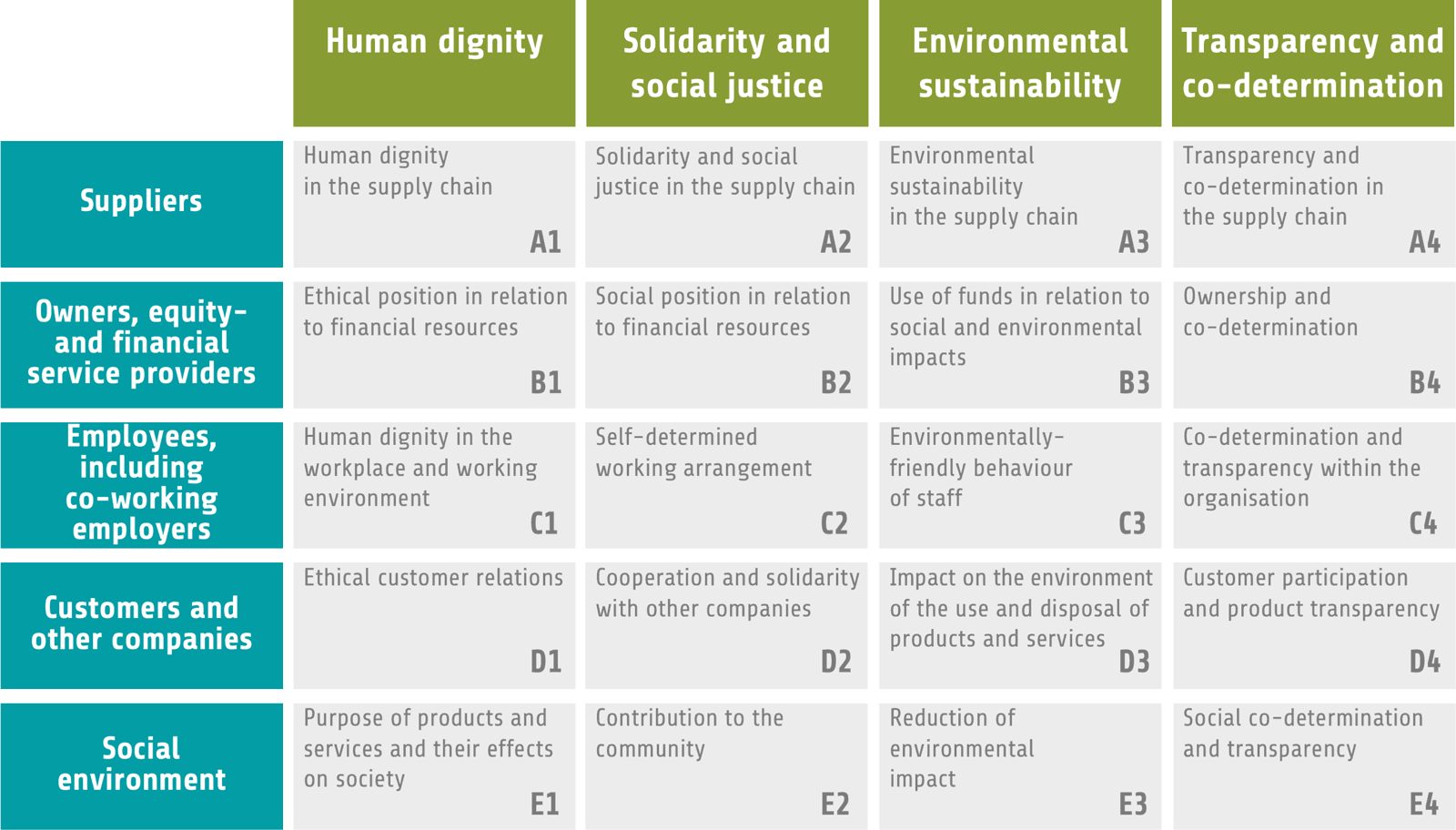
A1 Human dignity in the supply chain
A2 Solidarity and social justice in the supply chain
Every company can learn about the social risks and potential irregularities in the supply chain, communicate its requirements and make appropriate purchasing decisions.A3 Environmental sustainability in the supply chain
A4 Transparency and co-determination in the supply chain
the supply chain, and develops its business practices accordingly.
B1 Ethical position in relation to financial resources
wider capital markets which focus primarily on the financial returns it is making.
B2 Social position in relation to financial resources
B3 Use of funds in relation to social and environmental impacts
B4 Ownership and co-determination
C1 Human dignity in the workplace and working environment
C2 Self-determined working arrangements
C3 Environmentally-friendly behaviour of staff
C4 Co-determination and transparency within the organisation
D1 Ethical customer relations
honest communication on an equal footing and barrier-free access at all points of contact with customers. The concept of ethical customer relations may entail forgoing revenues or profit, where this is in the customers’ interest.
D2 Cooperation and solidarity with other companies
D3 Impact on the environment of the use and disposal of products and services
D4 Customer participation and product transparency
E1 The purpose of products and services and their effect on society
E2 Contribution to society
E3 Reduction of environmental impact
E4 Transparency and co-determination
open and pluralistic society.
Human dignity
Solidarity and social justice
Environmental sustainability
Transparency and co-determination
Suppliers
laying out contractural terms, and when exercising influence.Owners and financial partners
Employees, including co-working employers
Customers and other companies
Social environment

